
When
is Grounding Your Yacht Ever Good?
Well
it’s not when you have lost your way in the fog and end up on the rocks,
that’s for sure.
Where
it does come into it’s own is when it is providing the best earth possible to
your electronics and in particular, your Single Sideband Radio.
If
you are planning to venture further than the usual trip across the English
Channel or indeed 30Nm or more offshore, and want to remain in contact, then you
will probably be looking at installing a long range High Frequency (HF) radio,
more commonly known as a Single Sideband (SSB) Radio for your communications.
You
could be looking at other more modern (and expensive!) options such as Inmarsat,
Satellite Telephone or indeed Mini-M after maybe having had a poor experience
with SSB radios in the past, but look out, you will be paying through the nose
for any pictures and weather forecasts you receive. SSB radios are not an
antiquated form of communication by any stretch of the imagination!
It
may be that you already have an existing SSB radio fitted, but the installation
fundamentals have just been overlooked and because of your resultant lack of
reception or poor quality signal, you may have given up and are looking at
alternatives.
Well
…… not so fast
A
good SSB installation will give you very good weather forecasts, reports, faxes,
routing, worldwide communication and radio contact with various yachting safety
networks all for free; and with the easy addition of a special “PACTOR”
modem, you can even get Internet browsing and email at a very affordable level!
You
might be installing a long range radio system from scratch, maybe with a view to
break free from your regular life and sail your dream across the Atlantic to the
Caribbean. Good examples of this are the 200 or so yachts that annually compete
in the A.R.C. (Atlantic Rally for Cruisers). A race across the Atlantic, from
Gran Canaria to St Lucia.
These
yachts have a daily reporting schedule whilst in transit, where they check-in
with their positions (and quite often amusing anecdotes) whilst crossing the
ocean in company and relative safety. They utilise their SSB’s to receive
weather information to enable them to choose the best route and avoid any nasty
surprises. Then once they are safely ensconced in the Caribbean they may check
in daily to weather and safety radio nets so they can safely cruise the
Caribbean Island chain and keep in touch at the same time.
Well,
you would have chosen a high quality transmitter / receiver unit such as the
ICOM IC-M710 with an ICOM AT-130 automatic tuner unit. You will have chosen an
aerial option (whip, backstay or halyard), a separate dedicated radio battery
and charger, and a way of getting the whole system earthed into the ocean such
as a grounding plate like the “WonderBar” or “Dynaplate.
Let’s
start under the water. For a good earth (assuming you are not steel hulled) you
will have to haul the boat to install a grounding plate.
It should be installed as deep as possible and as close to the centreline
as possible to ensure it’s always covered with water, and when you install it,
it should “hang off” of the boat so that the plate has water on all of
it’s faces to maximise it’s earthing area. Do not bond it to the hull using
5200 between the plate and the hull or you will regret it!
If
you short cut the grounding process by earthing to the engine block or a keel
bolt, you may as well throw the whole lot overboard as the “noise” and
interference you will get, will make the radio annoying and maybe unusable.
On our boat (a 61ft
Oyster sailing yacht called “Talisman”), we chose the Mark VII Wonderbar
(21” long x 7” wide x ½” thick) as a grounding plate. This comes with 5
holes, 5 countersunk screws and 5 seals called “WonderSeals” which keep the
water out of the boat if installed properly!
We basically threw the screws that it came with away, and
invested in a 6ft long length of Bronze Silicon threaded stud (the same diameter
as the holes in the plate) and cut it into 5 equal 14” lengths using a band
saw, cleaning the swarf and threads afterwards.
Bronze
Silicon stud is the best metal for conduction of “earth” and although it’s
expensive, it’s not much in the grand scheme of things.

We
also bought an additional 5 “WonderSeals” to complete the install of the
plate so that we have a seal on the inside and the outside of the hull. A bit
over the top maybe but it’s a good, easy and cheap way to make sure it
doesn’t leak.
We have just sailed
over 5000Nm in 4 months with this install and it hasn’t leaked a drop and the
quality of our signal both sending and receiving is fantastic.
The
longer studs and suspended grounding plate basically enables us to dive on the
boat at any stage and remove the plate to clean it. That way we don’t have to
haul and we keep our radio performance in peak condition. The plate does tend to
clean itself when you transmit on the radio but if you don’t use it for any
length of time, it soon clogs up.
It
is quite common for people to dive on their yachts in the tropics to attempt to
keep their hull clean, unless they have a very good antifoul (such as Micron 44
or 66) suitable for that type of water and usage.
The antifoul you choose to paint your yacht with is another important point to bear in mind before you attempt to sail to warmer climbs. Unless (of course) you want to haul and re-paint when you get there. Mind you, scrubbing your hull by hand underwater is a good way to combine a swim with a keep fit class!
Next,
we have to carefully and accurately drill the holes in the hull to fix and
connect the plate to the “inside world” of your yacht. On the waterside of
the hull around the holes, it is important to remove any antifoul equal or
greater in area to the footprints of the “WonderSeals” so that they can
adhere to the hull in a strong and watertight way.
You
can antifoul the area again after the install but the seals must have a good
solid surface to stick to. A Dremmel tool is good for this. The area should
obviously be sanded flat before fixing to.
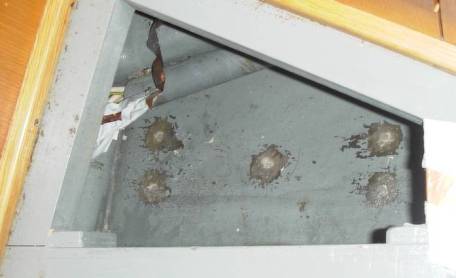
Carefully
drill Holes to suit the grounding plate. Remove the bilge paint and antifoul
from both inside and outside to ensure a good bond to sound surfaces. It’s
normally easiest to drill from the outside. Have a vacuum cleaner sucking from
inside the boat to catch the mess and stop debris clogging up your limber holes
in your bilge.

Notice
that the antifoul has been stripped back ready to receive the seals and
adhesive. The seals have a donut recess in them to take the sealant. Placed like
this, it allows you to add the sealant with minimal mess, then just push them up
against the hull and tighten the nuts on both sides. Don’t forget to run some
5200 up the holes in the hull and around the threads of the studs.
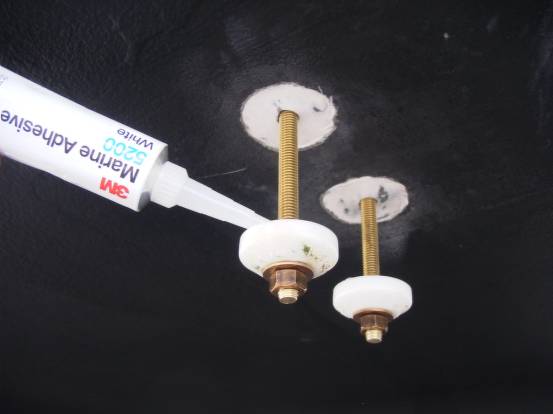
Add
the marine sealant (Use 3M 5200 – permanent bond for best results) to the
seals both inside and outside and tighten the nuts up on both sides allowing
24hrs to “go off” before fitting the plate and copper foil strip inside the
boat.

The
5 studs and seals are now in place ready to take the plate outside and copper
earthing foil inside after the sealant has had time to go off.
Mineral Spirits can
be used effectively to remove excess sealant and to clean the threads, and your
tools. Don’t go too mad though. It doesn’t matter that you can see some
sealant around your seals and studs. Just a light wipe is all I would suggest. I
always worry that it will affect the “setting” of the sealant if you use too
much.

Outside,
the finished seals are ready to take a couple of coats of antifoul. Do not paint
the studs.
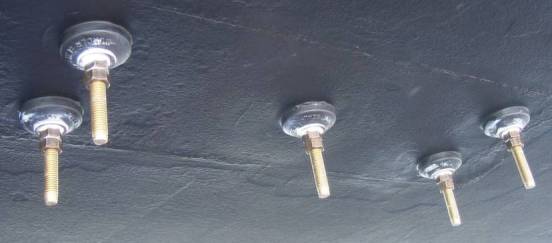
And
the finished thing, ready to take the WonderBar. Note the double nuts to lock
the studs in place.
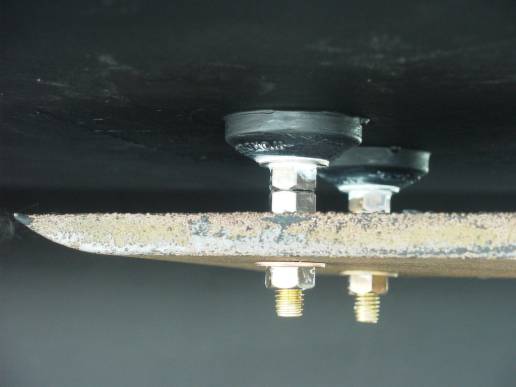
The
finished product. The manufacturer’s countersunk screws are replaced with
14” long Bronze Silicon studs (length depends on the thickness of your hull)
so that the plate can be removed with ease for cleaning. Also the plate is
suspended from the hull to maximise the surface area for grounding purposes.

This
plate is not new and has been re-used over the past 2 years and still going
strong. Muriatic acid (The old name for hydrochloric
acid (HCl)) is
great for cleaning it up like new but wear goggles and gloves, as it’s very
corrosive. The plate does tend to clean itself when you transmit on the radio.
The ends of each stud were drilled through and split pins
inserted to stop the final bolts from dropping off.
Sectional
Diagram Illustrating the Installation of the Grounding Plate, seals and studs
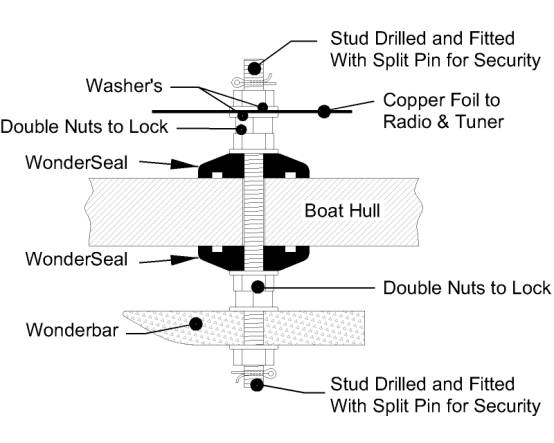
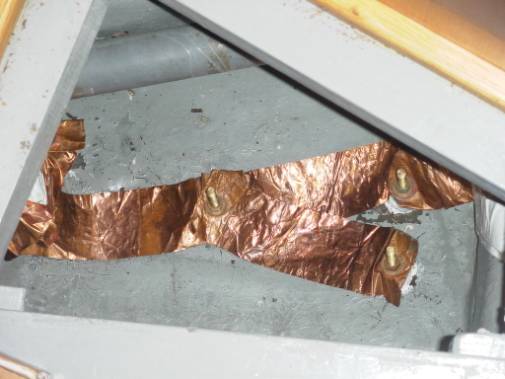
Copper
foil is run to every stud to maximise the use and area of the grounding plate.
This plate is purely for the SSB radio. There is a second smaller grounding
plate for the electronics, which massively reduces radio interference and noise.
Why
foil?
Round wires create inductive reactance at radio frequencies, and are not
effective as a good grounding conveyance. Use 2 or 3 inch wide, 3 mil copper
foil (available at most marine electronic stores) to achieve a good seawater
ground.

One
end of the copper foil is connected directly to the back of the radio unit
itself. Fold the foil 2-3 times being careful not to cut yourself (it’s very
sharp) and drill it through so you have a good connection. Do not be tempted to
earth anything else to this foil.
It
is VERY important that you do not attempt to connect the radio or tuner or any
part of your radio system to earth using a wire no matter how thick it is.
Copper foil is all you should use throughout; as wire develops a resistance to
earth and will severely affect your whole system.
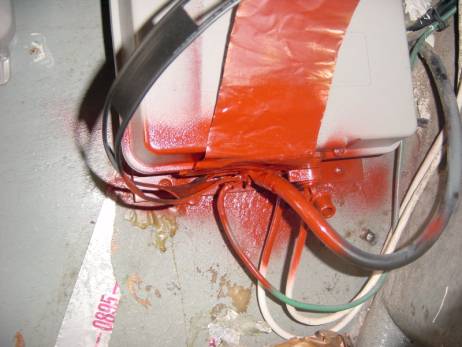
The
other end of the copper foil is connected directly to the automatic tuner
(mounted in the lazarette in this case) and all of the electrical connections
are covered with a Urethane Seal Coat aerosol paint to reduce corrosion as much
as possible.
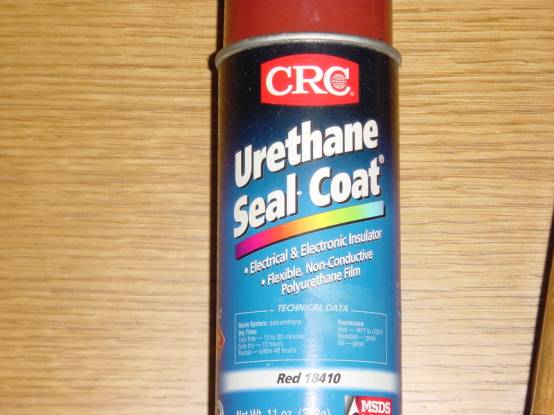
Polyurethane
Non Conductive Seal Coat to protect connections from the elements.
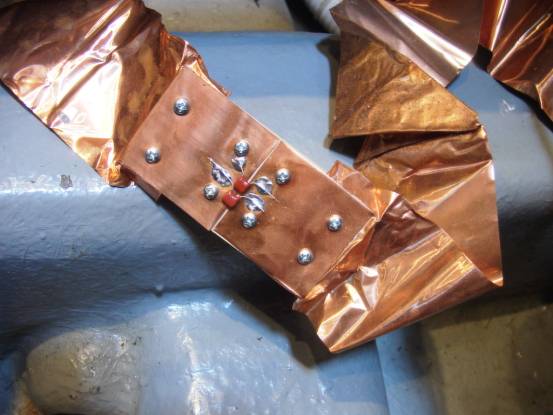
In
between the radio and the grounding plate we installed a DC Block, which is
simply a couple of one-way diodes to stop any DC voltage looping around in the
system. This dramatically reduces noise in your radio system.
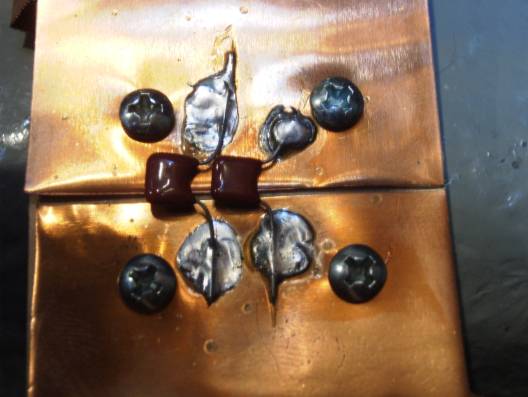
To
make the DC Block, take a small block of marine ply to use as a base and coat
the whole thing in a couple of coats of epoxy to protect it from the elements.
Then take some copper foil long enough to cover one side and cut it in half.
Double it up if you like. Screw it down in place and solder the 2 diodes across
the 2 pieces of copper.
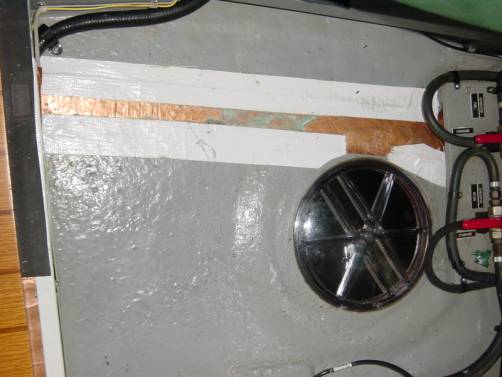
The
foil can be folded neatly to run through the boat but you should avoid
scrunching the foil. Staples are useful to hold it in place. Run duck tape over
the edges of the foil so that it doesn’t get damaged and also you won’t cut
yourself next time you have to work around the foil. Cover the rest of the
copper with a thin coat of paint or epoxy to keep it clean and un-tarnished. Do
not cut the foil unless you absolutely have to. There is always somewhere else
to run the foil. Don’t rush this part. Take your time and you will reap the
benefits.
The
best and only wire to use is GTO-15 cable. This wire may not look like much but
it is insulated and can carry 15000 volts. Always clean, solder and heat shrink
any connections.

You
will see the connection of the GTO-15 cable on the top of the tuner. Note the
heat shrink and the application of the Polyurethane Sealer paint. The other
important thing to notice is the Counterpoise wire. This is the black flat
plastic strip of wire with holes cut out of it. This runs from the tuner in the
lazarette all the way to the bow locker (about 75ft in total) and the radio
waves use this as a “Springboard” when you transmit giving you extra range
and a much clearer signal. The whole installation is finished by strapping all
the cables and wires down using cable ties and wire hold-downs (not shown here).
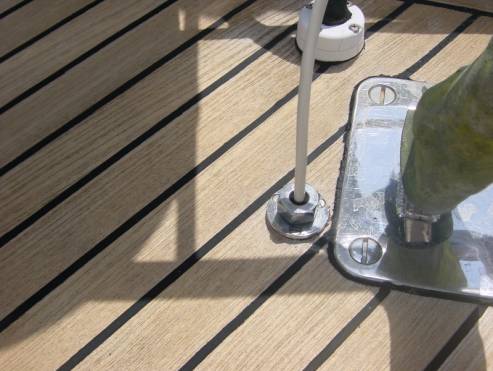
The
GTO-15 cable comes through the deck via a waterproof deck flange fitting and
runs up to the aerial of your choice.
There are 3 types of aerials you can have installed on
your yacht.

You
will see that we are currently using the halyard aerial. The connections are tin
soldered and heat shrunk after being covered with dialectic paste to prevent
corrosion. There is enough slack in the wires to trim off and re-connect if
necessary plus we carry spare GTO-15 cable.
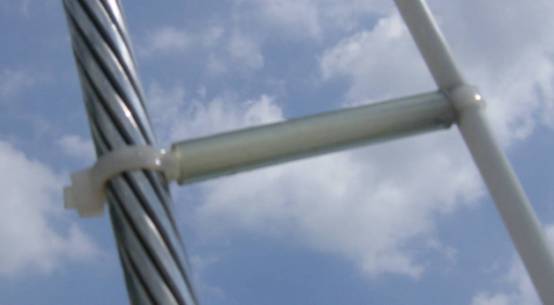
A
good tip to avoid earthing your hard earned signal out to the un-insulated
backstay is to hold the wire off of the backstay using plastic tubing and cable
ties spaced every 2ft or so.
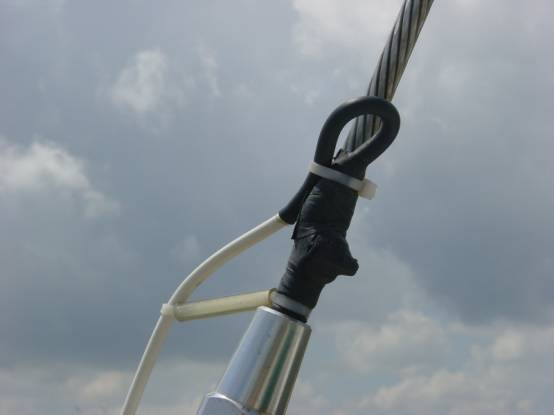
If
you decide to use the backstay aerial option, run the GTO-15 cable up the
backstay to immediately above the lower isolator (using the spacers every 2ft),
again soldering, coating in dialectic solution and heat shrinking the
connections. The wire can then simply be clamped to the backstay itself using a
hose clamp or jubilee clip. If you introduce a loop in the wire as shown above,
then any dampness will not be encouraged down to the connection itself but away
reducing corrosion even more.
To
finish off, wrap the whole kit and caboodle in self-amalgamating tape. Remember
that corrosion will quickly reduce the quality of any system installed on a
yacht so you should always endeavour to make any connections as good as possible
even if it does take extra time. You’ll be glad you did when you come to
service or replace parts.
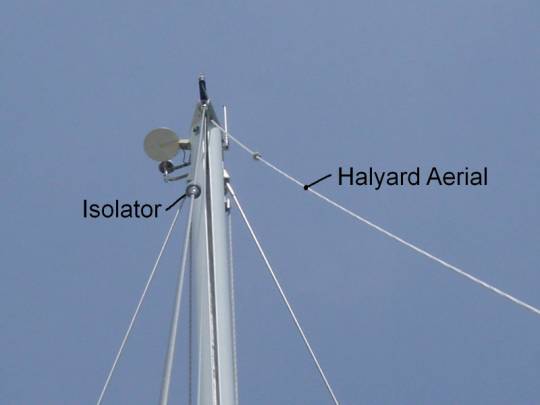
This
photo taken from the stern looking up to the masthead, shows the halyard aerial
(on the right) attached to a topping lift. It can be quickly and simply dropped
and coiled when you don’t need it. I always drop and coil it away if there is
a risk of a lightening strike and disconnect the backstay aerial. You will
notice the isolator at the top of the backstay in a position to maximise the
range of the radio.

The
bottom of the halyard aerial is simply shackled to the pushpit through the eye
splice.
We
haven’t talked about the installation of additional counterpoise wires in your
installation as yet, so here goes. Your system will work without them but if you
can be bothered to put in the work, you will certainly reap the benefits.
What
is a counterpoise?
Basically
a counterpoise is a springboard for your radio transmission to “bounce off”
of into the atmosphere.
Good
grounding or counterpoise techniques are absolutely necessary for maximum single
sideband range.
Half
of your antenna is your radio frequency (RF) ground. The radiating portion of
your antenna needs to see a mirror image of itself before it will send out your
SSB signal.
This
mirror image (called a counterpoise) is created by using a metal surface and
seawater as your radio frequency ground plane.
Your
marine single sideband system will not perform satisfactorily if you don't have
a good counterpoise system. Poor counterpoise (ground) equals poor range. This
is especially true on lower frequencies where large RF grounds (counterpoise)
are required for good range.
Of
course, for those of you with aluminum hull vessels, your RF ground plane
(counterpoise) is your hull, and you'll probably have the loudest signal
anywhere in the world. No further RF grounding is necessary for you lucky
people.
As
an extra counterpoise (RF ground) to our ground plate and copper foil, we
decided to install additional wires, which connect to the same point as the
copper foil on your tuner. This then runs the entire length of the yacht right
up to the bow if possible.
A
capacitive ground system such as this, made up of copper foil run around the
hull below the water line, and individual copper strip wires at one-quarter
wavelength sections, is one way to achieve a very good ground.
The
wire we used was basically 2 wires separated by plastic (available at most
electrical shops). This allowed us to run two runs of cable at the same time. We
then removed a 1.5ft length from one side of one of the wires at 37ft down the
run from the tuner. These lengths correspond with the ¼ wave radial lengths
required to match the most commonly used frequencies in the marine industry.
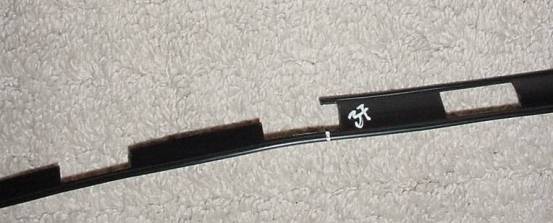
After
all of this work, which took about a week to install completely, we popped
Talisman back in the water and started to see how she worked.
Here
is an image downloaded using “ICS Weather Fax” software on a laptop computer
connected to the audio out socket of the SSB radio.
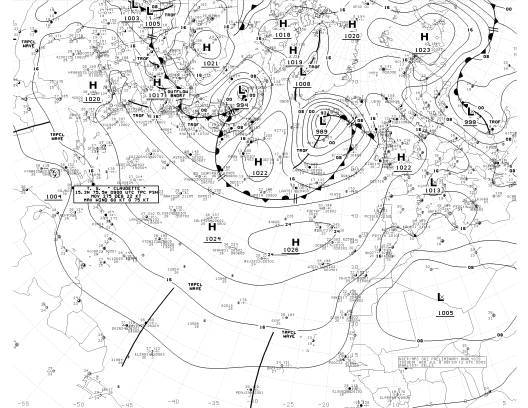
As
you will see, the quality is excellent. And you can leave the software on
permanently to grab the broadcasts when they are made or set up a schedule to
download at the right times of day.

This
is the finished installed radio set hung from the shelf above. It’s easy to
use front end with large LCD display and positive feel knobs makes using it a
pleasure.

The
Pactor PTC-II Pro is an excellent addition to the radio set for email and
Internet access.
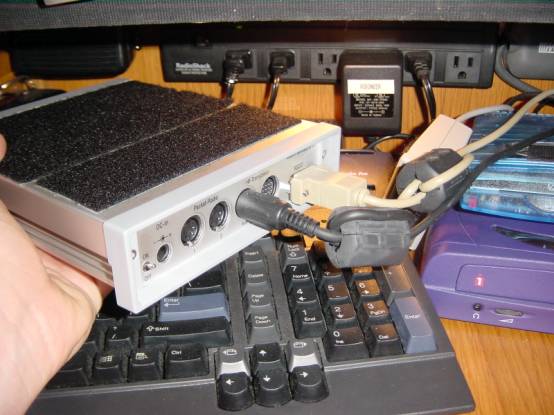
The
connections are simple and it’s powered by the SSB radio itself. Note the
graphite insulators that the wires are run through. These reduce noise and
interference even more.
I
hope that this helps you install or re-install your SSB system so that you start
to see the same results that I did.
I
am a fully qualified MCA Class 4 Master of yachts and have been running yachts
professionally for 6 years, having started playing in boats at the age of 6.
I
have a lot to offer and if I can help you further, maybe with sourcing and
sizing a halyard or backstay aerial, or your counterpoise, just drop me a line.
You will find me through my web site at www.crew4sail.com
Follow the “Contact Us” link.
Here
are some additional areas you can look at if needed, to reinforce your knowledge
and resources:
www.boatfix.com
link for WonderBar grounding plates
http://www.marinco2.com
link for the Dynaplate grounding plates
http://www.sailnet.com/collections/articles/index.cfm?articleid=suelar0175
A good article on Single Sideband Radios
http://icomamerica.com/
ICOM’s web site.
http://www.atomvoyages.com/AerialTricks.htm
A good source of information on antennas